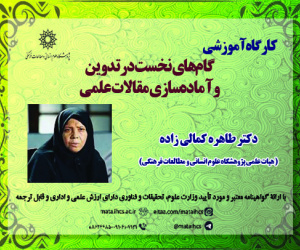تاثیر مدل پذیرش فناوری گشت های مجازی بر تمایل به بازدید حضوری از جاذبه ها و مقاصد گردشگری مبتنی بر آشنایی با مقصد (مقاله علمی وزارت علوم)
درجه علمی: نشریه علمی (وزارت علوم)
آرشیو
چکیده
توسعه فن آوری سبب تحولی در حوزه گردشگری شده است و استفاده از گشت های مجازی در حال پیشرفت است. بنابراین دانستن میزان پذیرش این فن آوری جهت آشنایی با مقصد و تمایل به بازدید ضروری است. هدف پژوهش بررسی تمایل گردشگران به بازدید حضوری از مکان ها با توجه به نظریه پذیرش فناوری و آشنایی با مقصد است. جامعه آماری افرادی هستند که حداقل یک بار از تورهای مجازی استفاده نموده اند. 204 پرسشنامه تکمیل شد. پژوهش از نظر هدف کاربردی و از حیث ماهیت و روش گردآوری توصیفی – پیمایشی است. برای تحلیل داده ها از آزمون معادلات ساختاری استفاده شده است. نتایج پژوهش نشان داد که تاثیر مدل پذیرش فن آوری (سهولت، لذت و سودمندی ادراکی) برآشنایی با مقاصد گردشگری کاربران گشت های مجازی تاثیر مثبت دارد هرچند تاثیر سودمندی ادراکی ناچیز است. همچنین آشنایی با مقاصد گردشگری سبب تاثیر مثبت و معنادار بر تمایل به بازدید از آن ها می گردد.The effect of the virtual tour technology acceptance model on the Tendency to actual visit tourist destinations based on familiarity with the destination
The development of technology has caused a revolution in the field of tourism and the use of virtual tours is progressing. Therefore, it is necessary to know the level of acceptance of this technology in order to know the destination and desire to visit. The purpose of the research is to investigate the willingness of tourists to visit places in person according to the theory of technology acceptance and familiarity with the destination. The population is people who have used virtual tours at least once. Structural equation test was used to analyze the data. The results showed that the effect of the technology acceptance model (perceptual ease, pleasure and usefulness) has a positive effect on the users' familiarity with the destinations of virtual tour , although the effect of perceptual usefulness is insignificant. Also, familiarity with tourist destinations has a positive and significant effect on the desire to visit them. Introduction During the last decade, technological progress has become more intense. The transformation and development of digital programs, computers, and mobile phones are happening daily. The impact of this technology delivery in the tourism industry can be seen in the form of virtual tours. In such a way that virtual tours, by using the information and visual features that they provide to tourists, create motivation for the desire or intention to visit tourist places. The intention to visit tourist attractions can be related to the experiences that a person has already gained. Experiences can make people familiar with goals. This familiarity can be obtained from virtual tours, whose users are influenced by three factors (convenience, pleasure, and perceived usefulness) important for technology adoption. So, knowing the extent and reasons for accepting virtual tours technology can be very important for tourism industry managers. Therefore, the purpose of this research is to investigate the willingness of tourists to visit places in real terms according to the theory of technology acceptance and familiarity with the destination. Materials and Methods The current research is applied in terms of purpose and descriptive survey in terms of the nature and method of collection. The statistical population of the research is real people who have used Iran's virtual tour websites and programs at least once. The expression of data collection is also an online questionnaire. The sample size in this research is 204 people, which has been determined based on the number of research items according to the use of structural equations. Discussion and Results According to the data analysis, the results of the current research showed that the dimensions of the virtual tours technology acceptance model (perceived ease, pleasure, and usefulness) have a positive effect on the recognition of destinations. However, the effect of perceived usefulness on familiarity with the destination was insignificant and this hypothesis was rejected. Also, this hypothesis showed that there is a positive and meaningful effect of familiarity with destinations on the desire to visit tourist destinations. Conclusions The ease, pleasure and usefulness that users perceive in the experience of virtual tours, causes them to accept the technology, which allows them to obtain the required information and knowledge about attractions and destinations. As a result, it can be said that the acceptance of technology leads to a better understanding of virtual tours. On the other hand, a better understanding of virtual tours (especially in terms of perceived pleasure and perceived ease) leads to familiarity with tourist destinations. Also, familiarity with the destinations makes virtual tour users want to visit tourist attractions in a real way.









